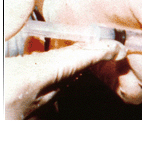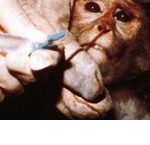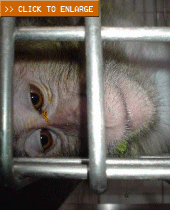Click here to go back.
ANIMAL VICTIMS OF DRUG TESTING
Many animals suffer slow, agonizing deaths in drug testing laboratories—cats, dogs, hamsters, mice, and numerous others. They spend their short lives locked in small, barren cages, given test drugs, observed, killed and dissected. Many are denied food and water. If obvious distress or painful side effects are noticed, they are logged and nothing more; to administer pain relief would be interfering with the study.
How can vivisectors tell if the animal feels nausea? Dizzy? A headache? Emotional or mental changes like confusion? These common symptoms, which most people can relate to, are not apparent to others; if you have a headache, the only way for anyone to know is for you to tell them. These noteworthy, revealing symptoms can only be identified and relieved by patient communication and therefore cannot be determined from animal experiments.
Rats are used more than any other animal in toxicology experiments, but not because they bear any meaningful similarities to humans. There are many significant and obvious differences between humans and rats that make their use in pharmaceutical testing pointless. Rats do not have gall bladders, which means they secrete bile more effectively than humans. Since many drugs are excreted through bile, this difference will affect drug metabolism.








